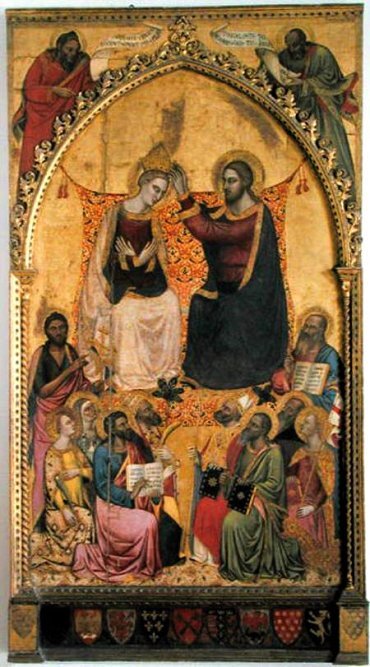Gothic Florence at the Accademia Gallery

The last section of the Accademia Gallery is dedicated to painting from the XIII to the XV century in Florence, with the oldest works of the whole gallery divided in three halls. One room is dedicated to paintings in tempera and gold on wood of the XIII and early XIV century in Florence, another to Giotto's followers active in Florence in the mid-XV century and the other to the Orcagna brothers.
All these works have sacred subjects and come from churches and convents in the Florentine and Tuscan area. In the first room, the one dedicated to the painting of the XIII and XIV centuries we can admire sacred works by Tuscan authors like Pacino di Bonaguida, Maestro della Maddalena and Grifo di Tancredi. From the first is the Tree of Life (1305-10), the largest panel of the room depicting Christ crucified to a wooden cross that is the Tree of Life.This tree is the essence of salvation, it produces twelve crops per year and brings to men the gifts of God, according to the verses of the Apocalypse (22.2). On the tree of life there are twelve branches, where hangs round fruit which recounts the stories of Christ's life.The work, full of symbols and made with great minute detail, was to inspire deep meditation.
In the second room then we find the works of Florentine painters that were Giotto's followers, like Bernardo Daddi and Taddeo Gaddi. Giotto had renewed medieval painting showing an interest in more naturalistic representation of the surrounding world, looking for "the Beauty in Truth". Of the great Tuscan Master is here exhibited only a fragment of a fresco with a shepherd's head, from the Badia Fiorentina. Of Bernardo Daddi we can admire a large painted Cross that stands out for size. The big shaped crucifix shows Christ on the cross as "Christus patiens", with a heavy body and legs bent, according to the iconography launched by Giotto at the beginning of the century. Another important painter was Taddeo Gaddi, who spent twenty-four years in the workshop of Giotto. Here we can find numerous poly-lobed panels with stories of Christ and St. Francis from the Basilica of Santa Croce in Florence, which originally decorated the wooden choir stalls.Then there are also small portable holy icons, performed for private devotion.
The last room contains paintings on wood by the Orcagna brothers, who lived in Florence in the XV century. Andrea, Nardo and Jacopo di Cione worked for a flourishing workshop belonging to the oldest and most famous of the three, Andrea, nicknamed "Orcagna", that is, the Archangel. The workshop was very well known in Florence, and received commissions for sculptures, paintings and architectural works. Here are exposed two altarpieces of great importance, in particular one by Andrea di Cione, Pentecost, and one by Nardo di Cione, the Trinity. The Pentecost depicts the moment when the Holy Spirit, symbolized by the white dove, descends in the form of tongues of fire upon the Apostles, who gathered with Mary. The Trinity instead impresses for the monumental setting of the central part of the triptych, with the imposing figure of God the Father blessing behind the Crucified Christ and the dove of the Holy Spirit. The main work on display in the hall is the majestic Coronation of the Virgin by Jacopo di Cione, restored in 2011 and only recently - in 2014 - arrived at the museum for an exhibition.











